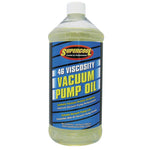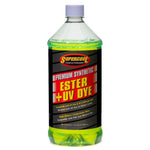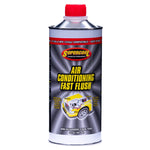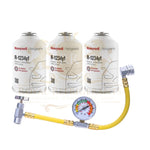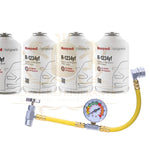You have no items in your shopping cart.
Everything You Need to Know About R22 MINERAL OIL for HVAC and Automotive Applications
When it comes to refrigerant systems, choosing the right lubricant is just as important as selecting the right refrigerant. In systems using R22 refrigerant, mineral oil has long been the standard choice due to its excellent compatibility, reliability, and performance. Whether in HVAC units or specialized automotive cooling systems, R22 mineral oil plays a crucial role in ensuring smooth and efficient operation.
In this guide, we’ll cover everything you need to know about R22 mineral oil — what it is, how it works, where it’s used, and why it remains relevant even as refrigerants evolve.
What Is R22 Mineral Oil?
R22 mineral oil is a non-synthetic lubricating oil derived from refined petroleum, specifically designed for use in systems operating with R22 refrigerant. It serves as a lubricant for the compressor and other moving parts, ensuring proper functioning and long-term durability.
• Base: Refined petroleum (paraffinic or naphthenic base)
• Viscosity range: Commonly ISO 68 or ISO 100, depending on the system
• Compatibility: Ideal for HCFC refrigerants like R22
Because of its strong miscibility with R22, mineral oil circulates well throughout the system, maintaining lubrication in all critical areas.
Why Mineral Oil Is Used with R22 Refrigerant
Before synthetic lubricants became common, mineral oil was the industry standard — and for good reason. Even today, it remains the best match for many older R22 systems because of:
• ✅ Excellent compatibility – Perfectly miscible with R22 refrigerant.
• ✅ Proven reliability – Decades of successful use in HVAC and refrigeration systems.
• ✅ Cost-effectiveness – Cheaper than synthetic oils like POE.
• ✅ Ease of maintenance – Simple handling, widely available, and no special procedures required.

Applications of R22 Mineral Oil
HVAC Systems:
• Central air conditioning units
• Window and split AC systems
• Rooftop and packaged units
• Chillers and heat pumps
Refrigeration Systems:
• Cold storage units
• Display freezers and chillers
• Ice-making equipment
• Walk-in coolers
Automotive Applications:
Although R22 is rare in modern automotive A/C systems (which now use R134a or R1234yf), older vehicle or specialty systems using R22 can still rely on mineral oil as the primary lubricant.
Compatibility and Retrofit Considerations:
With the phase-out of R22 refrigerant, many systems are being converted to alternatives like MO99 (R-438A), R407C, or R422D. When retrofitting:
• ❗ Mineral oil is not always compatible with HFC-based refrigerants (like R407C), which often require POE oil instead.
• ✅ Some drop-in replacements like MO99 remain compatible with existing mineral oil, reducing retrofit costs.
• 🔄 Always consult the manufacturer’s retrofit guidelines before switching refrigerants or lubricants.
Pros and Cons of R22 Mineral Oil
Pros:
• Excellent compatibility with R22 refrigerant
• Affordable and widely available
• Proven long-term reliability
• Simple handling and maintenance
Cons:
• Limited compatibility with many HFC refrigerants
• Less effective in high-efficiency, modern systems
• Derived from petroleum (non-synthetic)
Conclusion
R22 mineral oil remains an essential component for older HVAC and refrigeration systems that still operate with R22 refrigerant. Its strong compatibility, effective lubrication, and cost-efficiency make it the go-to choice for maintaining and servicing legacy systems. However, as the industry transitions toward newer, more environmentally friendly refrigerants, it’s important to understand mineral oil’s limitations and plan for potential lubricant changes during retrofits.
Whether you’re maintaining an existing R22 system or preparing for a refrigerant conversion, understanding how R22 mineral oil works — and when to use it — is key to ensuring reliable, efficient, and long-lasting performance.
 English
English


